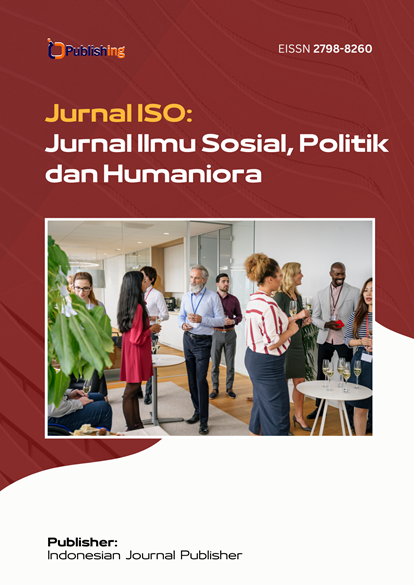Cream Strategy and Its Crucial Role In Foreign Language Learning
DOI:
https://doi.org/10.53697/iso.v4i2.2166Keywords:
CREAM Strategy, Creativity, Reflective, Effective, MotivationAbstract
Educating future foreign language teachers using the CREAM strategy significantly enhances their language skills. This article explores the CREAM strategy, a valuable approach for language learners, and examines its importance in language acquisition.
References
Cottrell,S. The Study Skills Handbook, 4th edition, Palgrave Macmillan. 2013
Cottrell,S. Skills for Success. The Persoanal Development Planning Handbook. Palgrave Macmillan. 2003
Richards. Jack C. Teaching Listening and Speaking. 32 Avenue of the Americas, New York, NY 10013-2473, USA Cambridge University Press 2008—p.11-14.
Milad, Marine. Applying the CREAM Strategy for Coaching Teaching Practices. IAFOR Journal of Education Volume 5 – Issue 1 – Spring 2017
Mamatkulova N, Effectiveness of Using the Cream Strategy in Learning a Foreign Language. Collection of the International scientific and practical conference on“Fundamental and Theoretical aspects of Linguodidactics” April 28, 2023
Dong, Y. (2022). Cost and efficiency perspectives of ceramic membranes for water treatment. Water Research, 220, ISSN 0043-1354, https://doi.org/10.1016/j.watres.2022.118629
Zhang, J. (2021). A pulsatile release platform based on photo-induced imine-crosslinking hydrogel promotes scarless wound healing. Nature Communications, 12(1), ISSN 2041-1723, https://doi.org/10.1038/s41467-021-21964-0
Zhao, Y. (2021). Biomimetic nanoparticle-engineered superwettable membranes for efficient oil/water separation. Journal of Membrane Science, 618, ISSN 0376-7388, https://doi.org/10.1016/j.memsci.2020.118525
Chen, M. (2021). AutoFormer: Searching Transformers for Visual Recognition. Proceedings of the IEEE International Conference on Computer Vision, 12250-12260, ISSN 1550-5499, https://doi.org/10.1109/ICCV48922.2021.01205
Li, R. (2021). Inkjet printing of dopamine followed by UV light irradiation to modify mussel-inspired PVDF membrane for efficient oil-water separation. Journal of Membrane Science, 619, ISSN 0376-7388, https://doi.org/10.1016/j.memsci.2020.118790
Shi, S. (2019). Vaccine adjuvants: Understanding the structure and mechanism of adjuvanticity. Vaccine, 37(24), 3167-3178, ISSN 0264-410X, https://doi.org/10.1016/j.vaccine.2019.04.055
Bekaii-Saab, T.S. (2019). Regorafenib dose-optimisation in patients with refractory metastatic colorectal cancer (ReDOS): a randomised, multicentre, open-label, phase 2 study. The Lancet Oncology, 20(8), 1070-1082, ISSN 1470-2045, https://doi.org/10.1016/S1470-2045(19)30272-4
Dickinson, E. (2019). Strategies to control and inhibit the flocculation of protein-stabilized oil-in-water emulsions. Food Hydrocolloids, 96, 209-223, ISSN 0268-005X, https://doi.org/10.1016/j.foodhyd.2019.05.021
Cui, J. (2019). Facile preparation of grass-like structured NiCo-LDH/PVDF composite membrane for efficient oil–water emulsion separation. Journal of Membrane Science, 573, 226-233, ISSN 0376-7388, https://doi.org/10.1016/j.memsci.2018.11.064
Islam, R.M. (2019). Safety and efficacy of testosterone for women: a systematic review and meta-analysis of randomised controlled trial data. The Lancet Diabetes and Endocrinology, 7(10), 754-766, ISSN 2213-8587, https://doi.org/10.1016/S2213-8587(19)30189-5
Wei, C. (2018). Simplified and robust adhesive-free superhydrophobic SiO2-decorated PVDF membranes for efficient oil/water separation. Journal of Membrane Science, 555, 220-228, ISSN 0376-7388, https://doi.org/10.1016/j.memsci.2018.03.058
Doan, C.D. (2018). Internal and external factors affecting the crystallization, gelation and applicability of wax-based oleogels in food industry. Innovative Food Science and Emerging Technologies, 45, 42-52, ISSN 1466-8564, https://doi.org/10.1016/j.ifset.2017.09.023
Zeng, T. (2017). Development of antioxidant Pickering high internal phase emulsions (HIPEs) stabilized by protein/polysaccharide hybrid particles as potential alternative for PHOs. Food Chemistry, 231, 122-130, ISSN 0308-8146, https://doi.org/10.1016/j.foodchem.2017.03.116
Cheng, Q. (2017). Facile fabrication of superhydrophilic membranes consisted of fibrous tunicate cellulose nanocrystals for highly efficient oil/water separation. Journal of Membrane Science, 525, 1-8, ISSN 0376-7388, https://doi.org/10.1016/j.memsci.2016.11.084
Purnamawati, S. (2017). The role of moisturizers in addressing various kinds of dermatitis: A review. Clinical Medicine and Research, 15(3), 75-87, ISSN 1539-4182, https://doi.org/10.3121/cmr.2017.1363
Rashighi, M. (2017). Vitiligo Pathogenesis and Emerging Treatments. Dermatologic Clinics, 35(2), 257-265, ISSN 0733-8635, https://doi.org/10.1016/j.det.2016.11.014
Ramazani, F. (2016). Strategies for encapsulation of small hydrophilic and amphiphilic drugs in PLGA microspheres: State-of-the-art and challenges. International Journal of Pharmaceutics, 499(1), 358-367, ISSN 0378-5173, https://doi.org/10.1016/j.ijpharm.2016.01.020
Downloads
Published
How to Cite
Issue
Section
License
Copyright (c) 2024 Mamatkulova Nilufar Fayzullakulovna

This work is licensed under a Creative Commons Attribution 4.0 International License.













